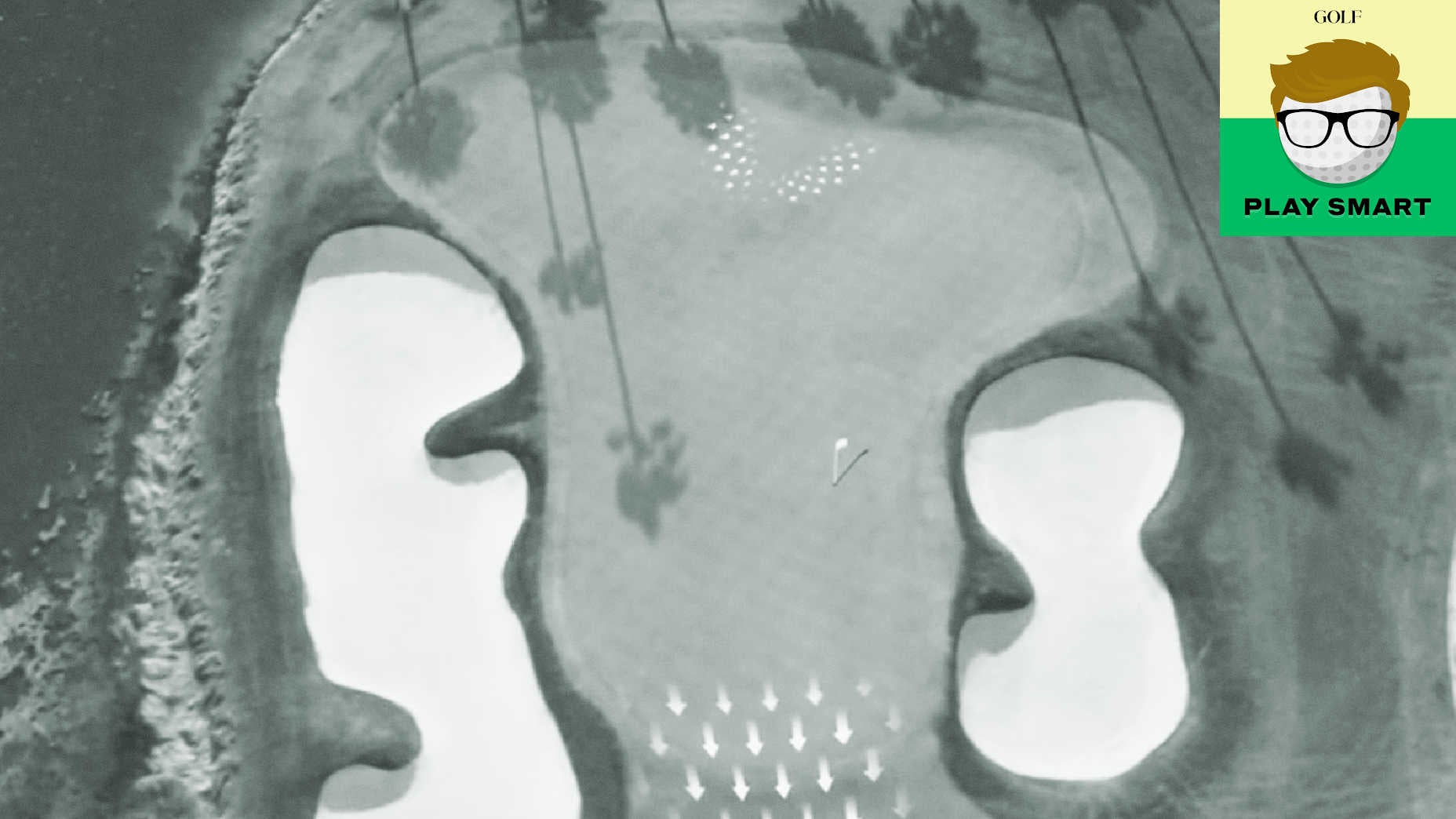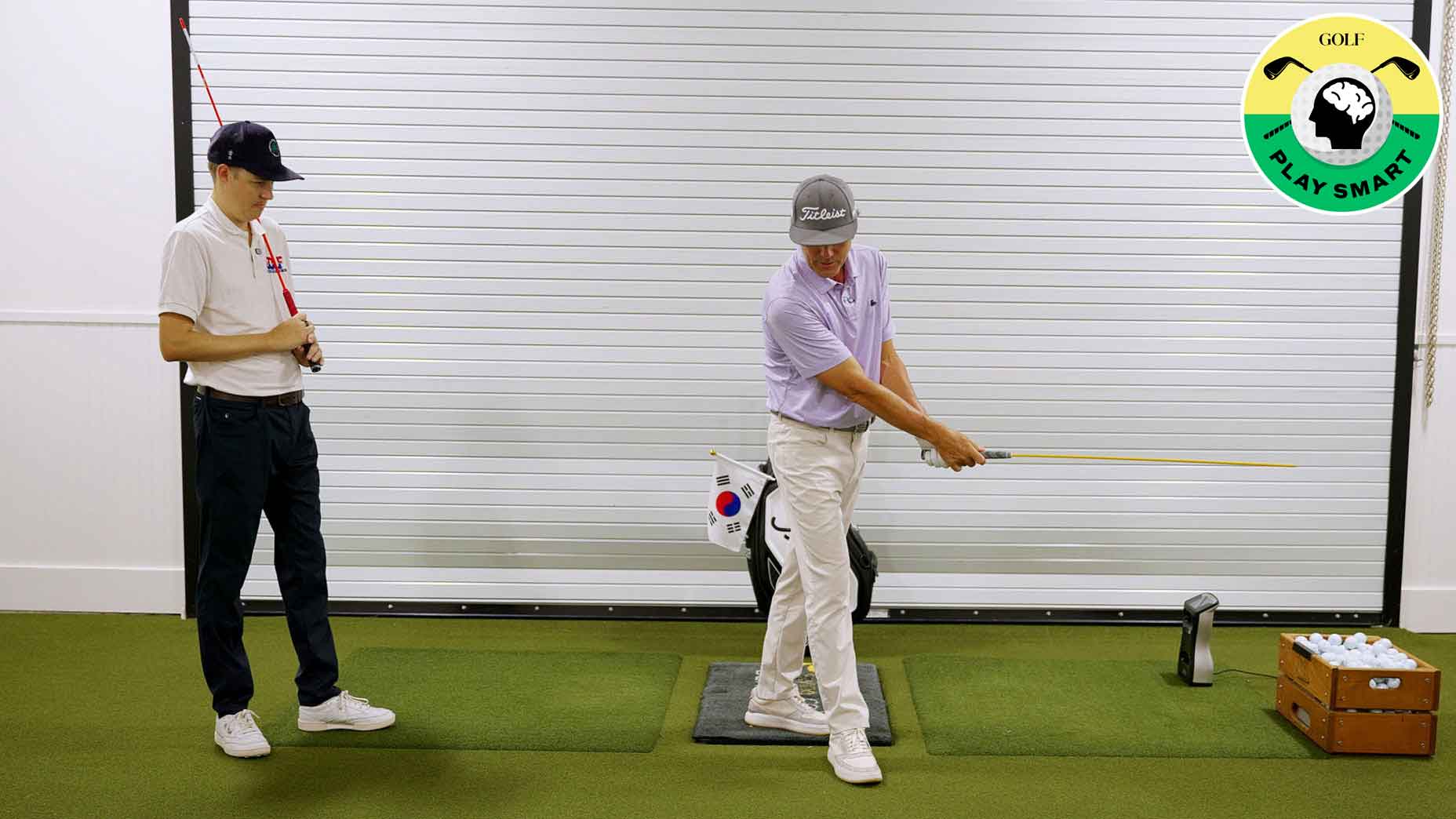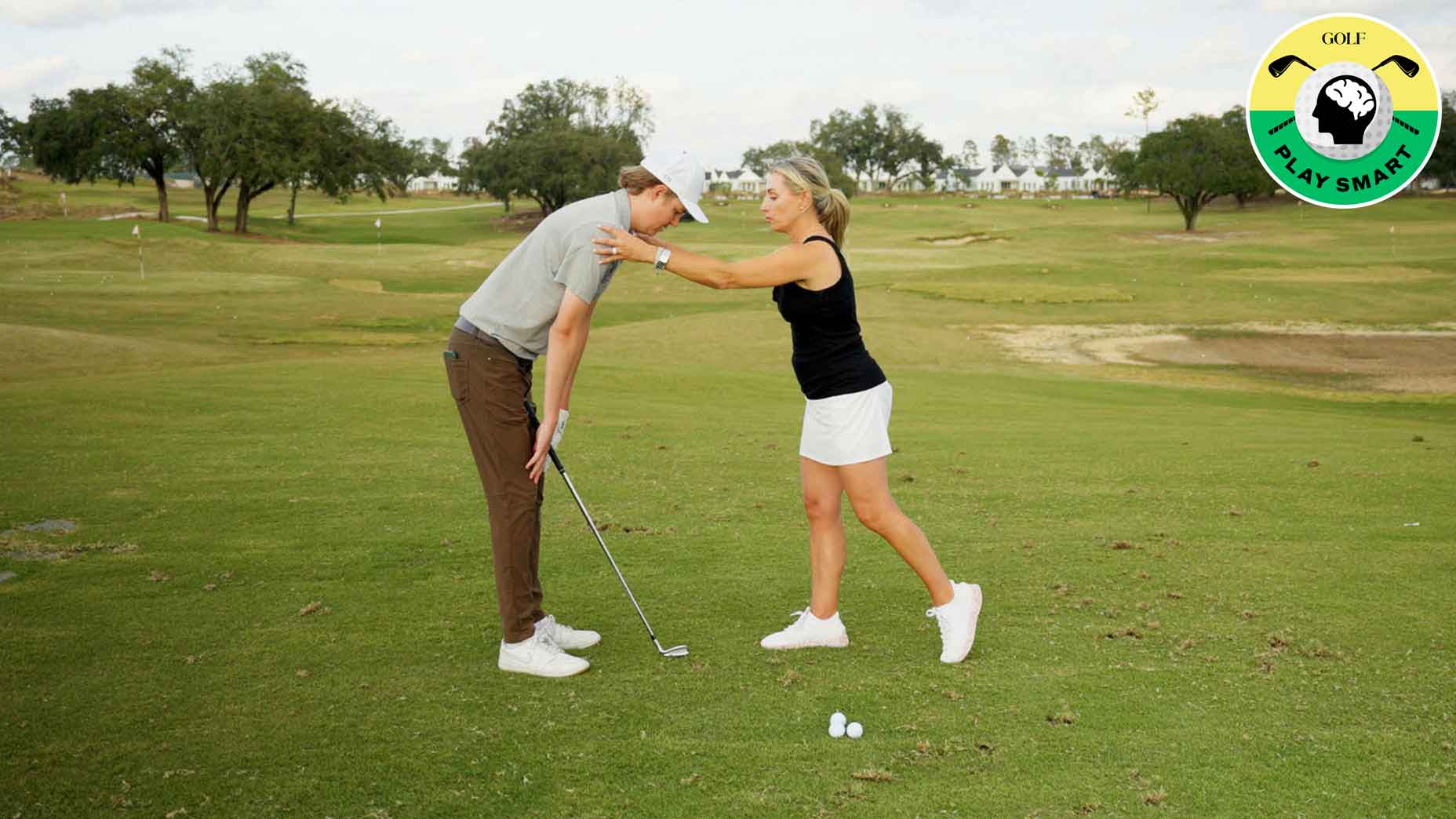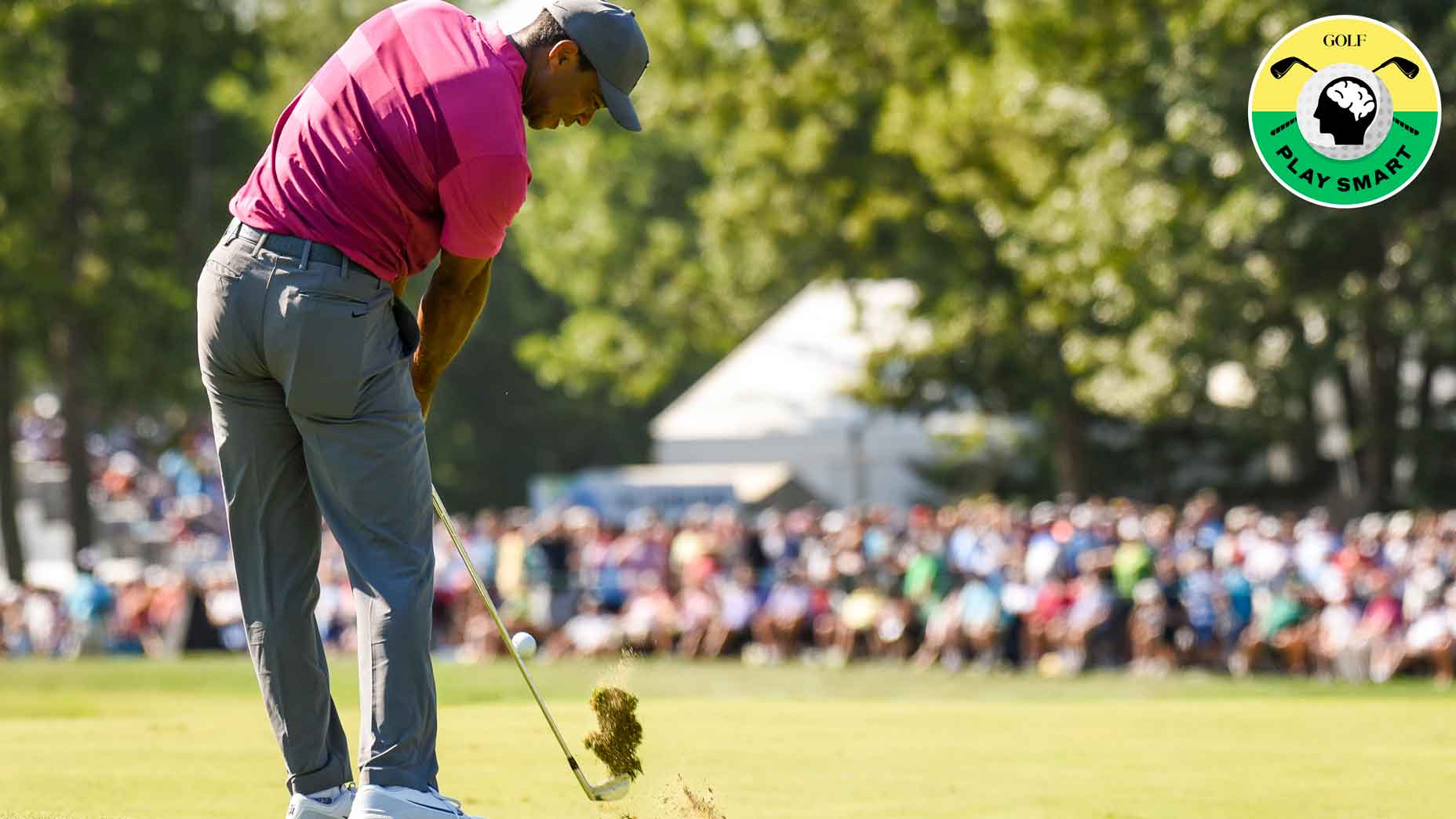Welcome to Play Smart, a game-improvement column that drops every Monday, Wednesday and Friday from Game Improvement Editor Luke Kerr-Dineen to help raise your golf IQ and play smarter, better golf.
The 3rd hole at PGA National is exactly the kind of hole the hipster golf architecture crowd despises.
A fairly straightaway 526-yard par-5, the tactic for pros playing the Honda Classic on Thursday was simple: Send something into the vicinity of the fairway off the tee, then something into the vicinity of the green, then pitch it close. Less than two percent of golfers found a penalty hazard off the tee, more than 70 percent went for the green in two, and 63 of the 68 birdies on the hole were made from a third shot of less than 80 yards. It finished Thursday ranked the easiest hole of the day.
But watching the broadcast during the first round, it struck me that this is exactly the kind of hole pros make look easier than it is for the rest of us. Because while long-hitting pros have the ability to flip a wedge over the various boobytraps of this T-shaped green, which has bunkers flanking both sides of the front portion, most amateur golfers would be hitting a full short iron for their third shot. It makes chasing a birdie opportunity a very different proposition, even though they may watch the pros think they should make birdie. In the end, all it does is lead them directly into a trap
Here’s why.
Let’s start by taking a look at the green itself. The first round pin was pretty well protected: placed three yards off the right side of the green, and 13 yards off the front.
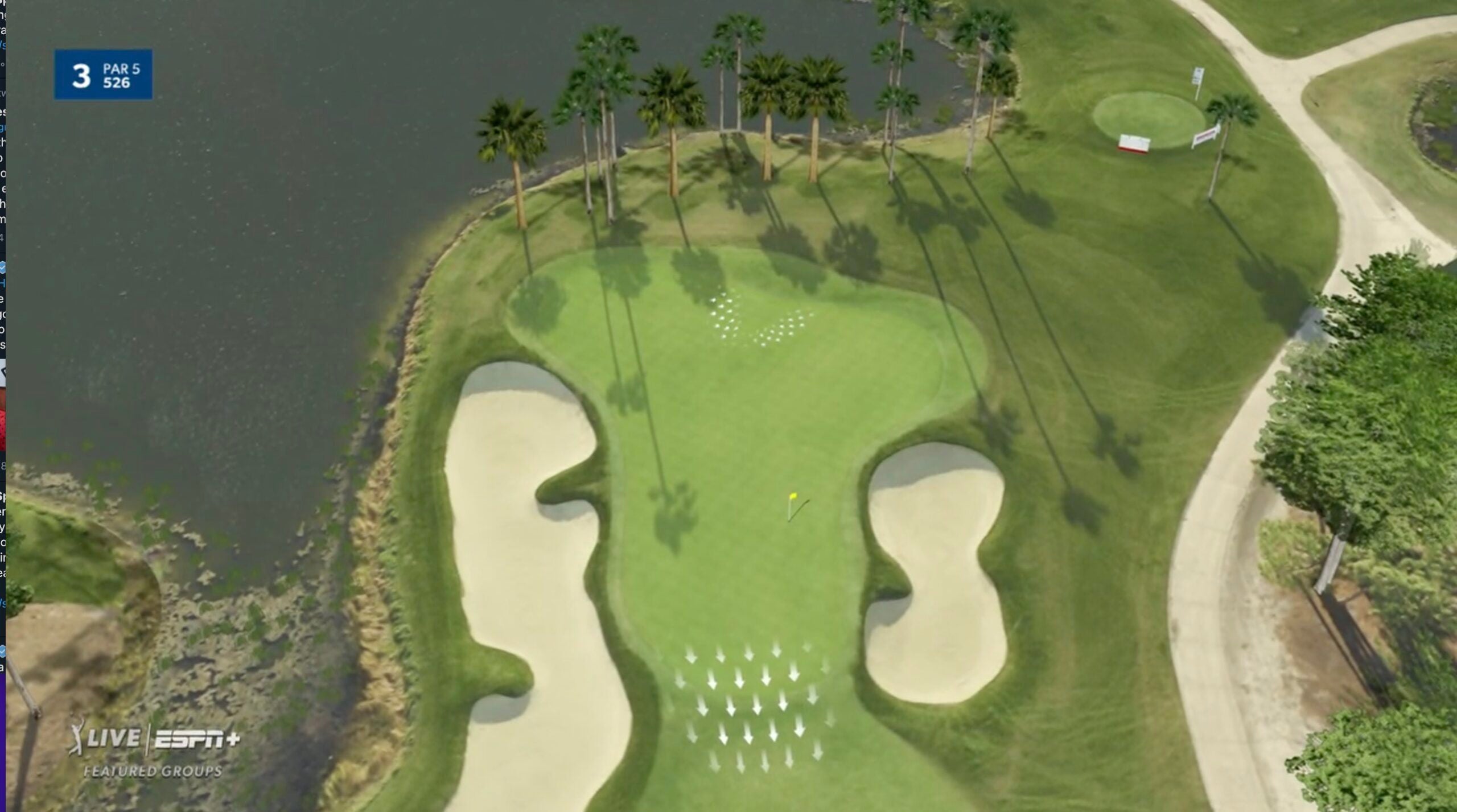
Sensing a birdie opportunity with a short iron in their hands, or perhaps not thinking about it much to begin with, lots of golfers would make the tragic mistake of aiming straight at this pin.
As golf strategy whizz Scott Fawcett has helped popularize recently through his innovative DECADE Golf system, aiming at pins is generally a bad idea, but aiming at this pin would be an especially bad idea.
Why? Because as Scott suggests, when you’re deciding where to aim, it’s best to consider your dispersion pattern. Think about what would happen if you hit 20 balls from the same spot, to the same target. What you’d end up with is an oval-shaped pattern that’s tilted from long left to short right (because misses to the right almost always end up short due to the effect of the open clubface, and vice versa). The higher your handicap, the more likely you are to miss short right.
In practice, what that means is that taking dead aim at this pin would leave a huge bulk of your misses in the worst possible spot: Short-sided in the bunker.
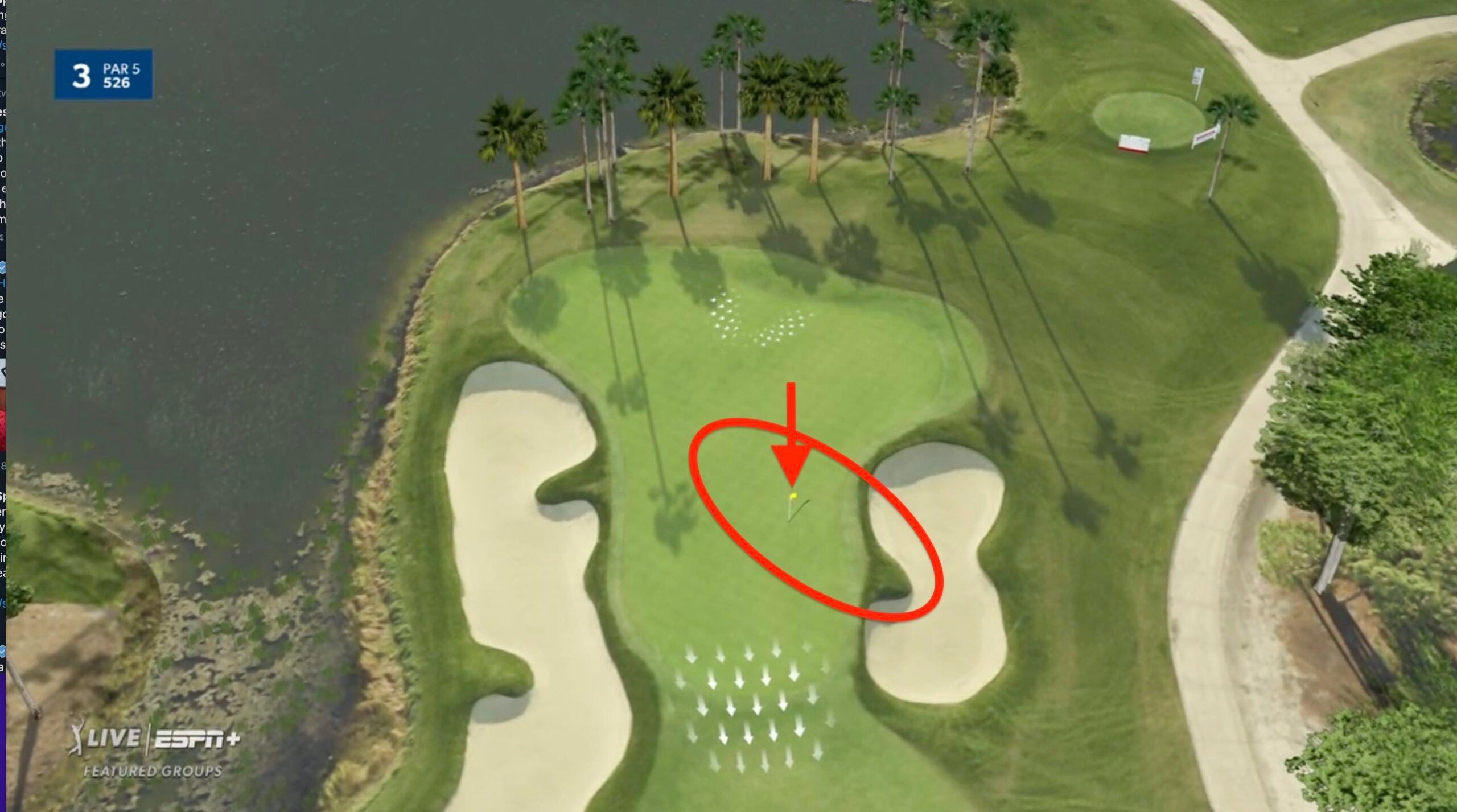
This is why chasing pins is usually a pretty bad idea, as you can see when you move the same 15 yard-wide dispersion pattern about eight yards to the left of the pin.
The positive effects quickly become clear: A majority of your not-terrible shots will end up somewhere on the green. You may stripe a shot to the middle of the green, which is a bit anticlimactic, but you may also hit a shot that technically misses short-right of your target, but flags the pin anyway.
In effect, by being a little more conservative in choosing a target, you’ve turned your worst misses from a likely bogey to a potential birdie.
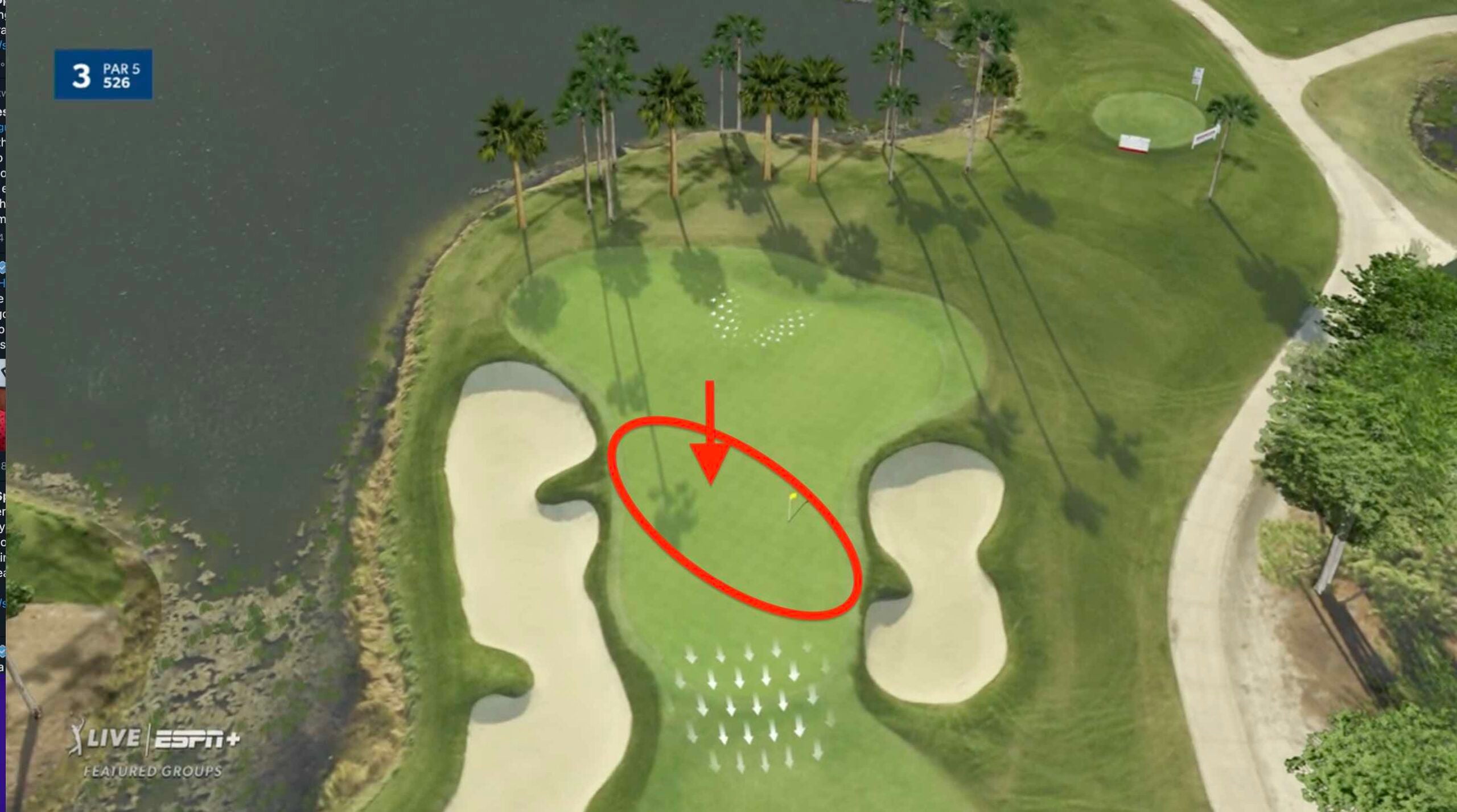
But it’s worth noting that there’s an even safer option than that which, for lots of golfers, would actually be the best target of them all: Not just aiming to the middle of the green, but taking an extra club when they do. Amateur golfers, especially high handicaps, almost never take enough club. By clubbing up in this case, you’ll effectively be chasing the fattest part of the green. That will give you loads of room for error. Only the truly atrocious shots will end up in the worst, short-sided spots.
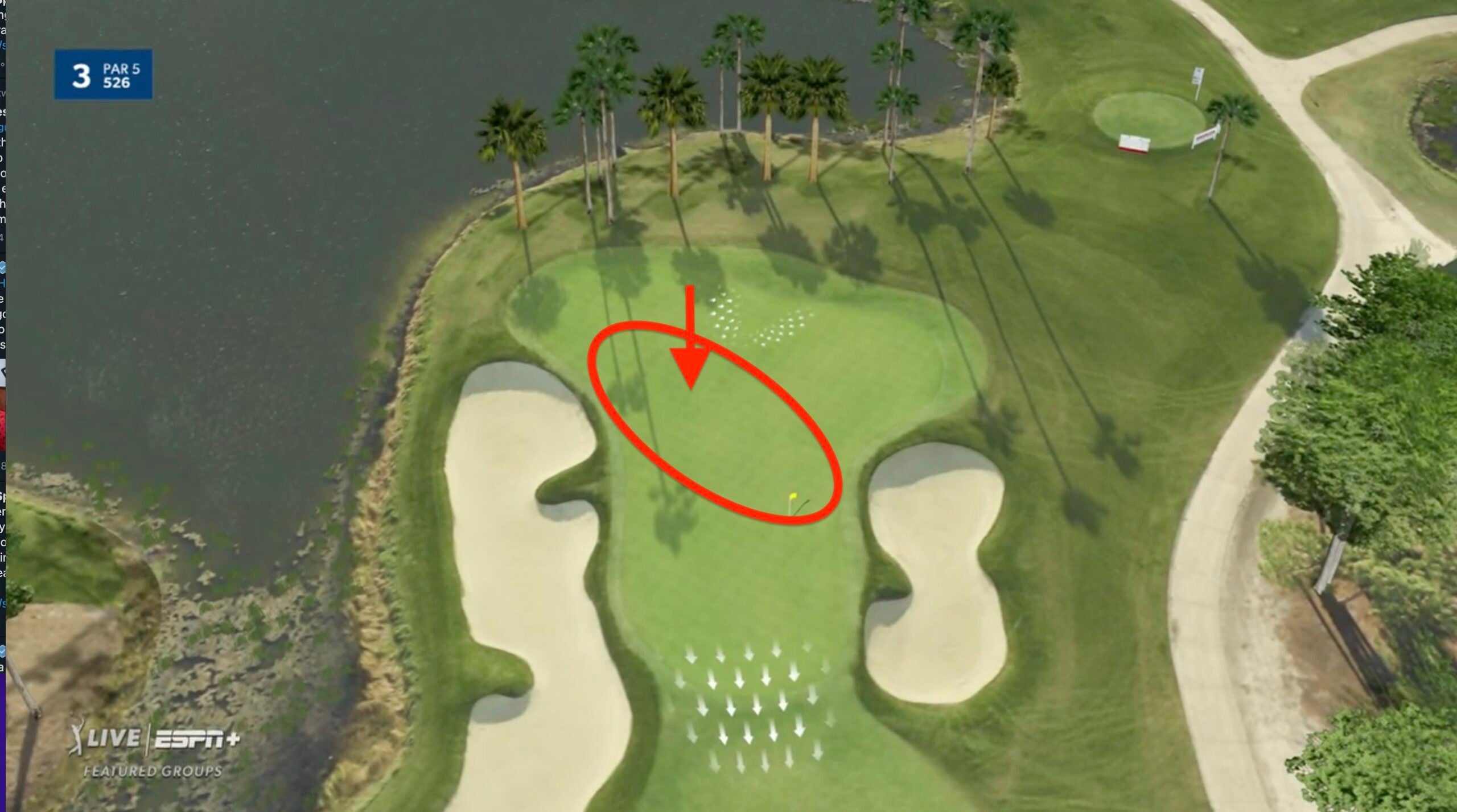
So just because pros make this hole look easy, don’t fall into the trap of thinking it is easy. Get complacent, choose the wrong target and this hole will get really hard in a hurry.
Need help unriddling the greens at your home course? Pick up a custom Green Book from 8AM Golf affiliate GolfLogix.
